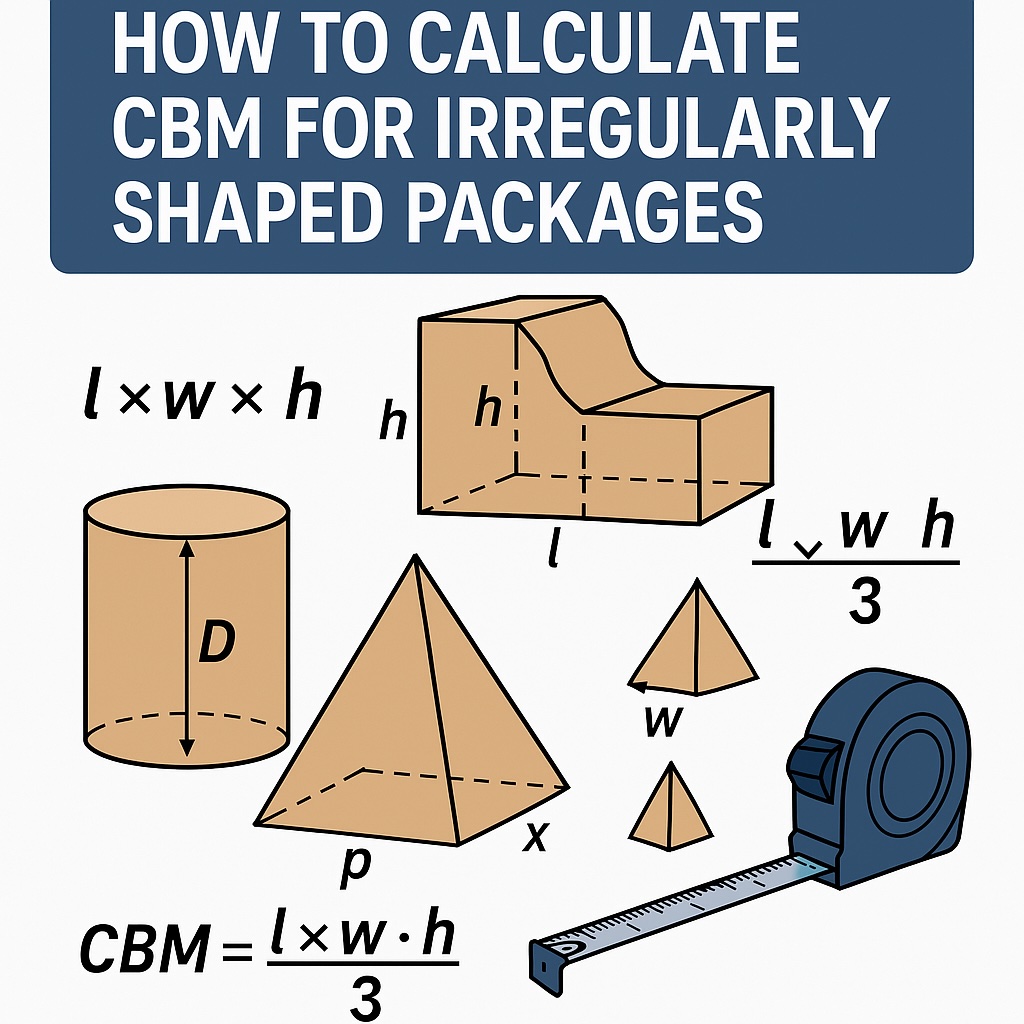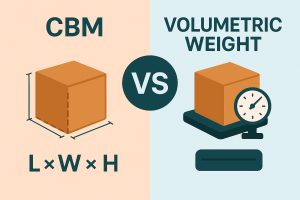Calculating CBM (Cubic Meter) for irregularly shaped packages—like cylinders, palletized goods, or oddly sized items—requires a different approach than standard boxes. Whether you’re shipping barrels, machinery, furniture, or pallets, this guide will help you measure accurately and avoid costly freight surprises.
Why Irregular Packages Need Special CBM Calculation
Carriers charge based on the space your cargo occupies, not just weight. If you underestimate dimensions, you may face:
- Unexpected freight cost increases
- Rejected shipments due to incorrect documentation
- Wasted container space from inefficient packing
📦 Pro Tip: Always measure the maximum dimensions of your package, including any protrusions or bulges.
Step-by-Step Method to Calculate CBM for Irregular Shapes
1. Measure the Maximum Dimensions
For any irregular package, measure:
- Length (L) – Longest side
- Width (W) – Widest point
- Height (H) – Highest point (including protrusions)
Example:
A rolled-up carpet with bulging sides measures:
- L = 2m, W = 0.8m, H = 0.5m
- CBM = 2 × 0.8 × 0.5 = 0.8 CBM
2. For Cylindrical Packages (Barrels, Tubes, Drums)
Use the cylinder volume formula:
CBM = π × (Radius)² × Height
(Convert radius from diameter: Radius = Diameter ÷ 2)
Example:
A drum with:
- Diameter = 1m → Radius = 0.5m
- Height = 1.2m
- CBM = 3.14 × (0.5)² × 1.2 = 0.94 CBM
3. For Palletized Shipments
Calculate entire pallet dimensions (including overhang):
- Measure length, width, and height of the entire stacked pallet.
Example:
If pallet base is 1.2m × 1m and goods stack up to 1.5m high:
CBM = 1.2 × 1 × 1.5 = 1.8 CBM
4. For Bulky Items (Furniture, Machinery)
- Break down into rectangular sections (if possible).
- Calculate CBM for each, then sum them up.
Example:
A sofa with two sections:
- Section 1: 2m × 0.8m × 0.5m = 0.8 CBM
- Section 2: 1.5m × 0.6m × 0.4m = 0.36 CBM
- Total CBM = 0.8 + 0.36 = 1.16 CBM
⚠️ 3 Common Mistakes to Avoid
- Ignoring protrusions (handles, bulges) → Measure the outermost points.
- Using average dimensions → Always take max L, W, H.
- Forgetting pallet height → Include the entire stacked height.
Pro Tips to Reduce Costs
- Disassemble items (if possible) to minimize wasted space.
- Use stretch wrap to secure irregular shapes into a more rectangular form.
- Stack efficiently to avoid air gaps in containers.
- Compare carriers – some offer better rates for irregular shipments.
FAQs
Q: How do I calculate CBM for a triangular package?
A: Treat it as a rectangular box using its max L, W, H.
Q: Do carriers accept manual CBM calculations?
A: Yes, but they may remasure—always double-check!
Q: What if my item is curved (like pipes)?
A: Use the cylinder method or measure the rectangular bounding box.
Final Thoughts
Irregular packages don’t have to mean unpredictable shipping costs. By measuring maximum dimensions and using the right formulas, you can avoid surprises and save money.

